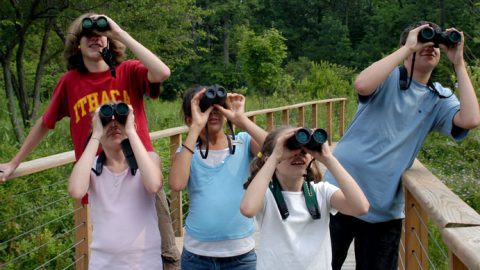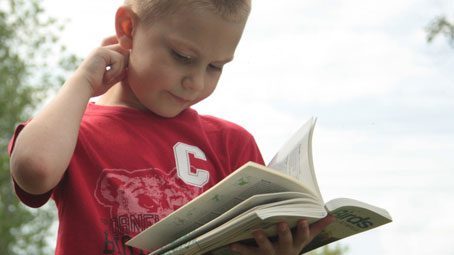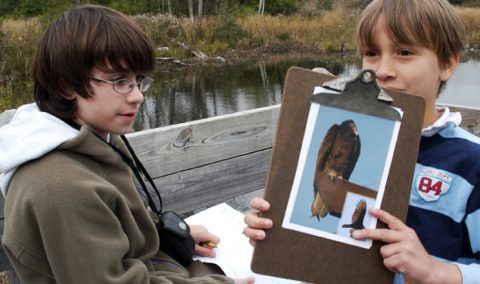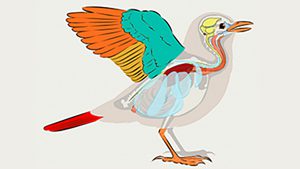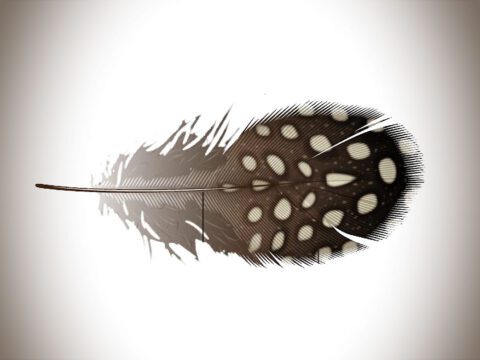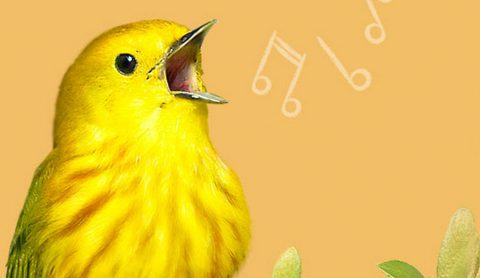Perspective: Let’s Start Teaching Ornithology in High School
By Jeff R. Manker
July 1, 2018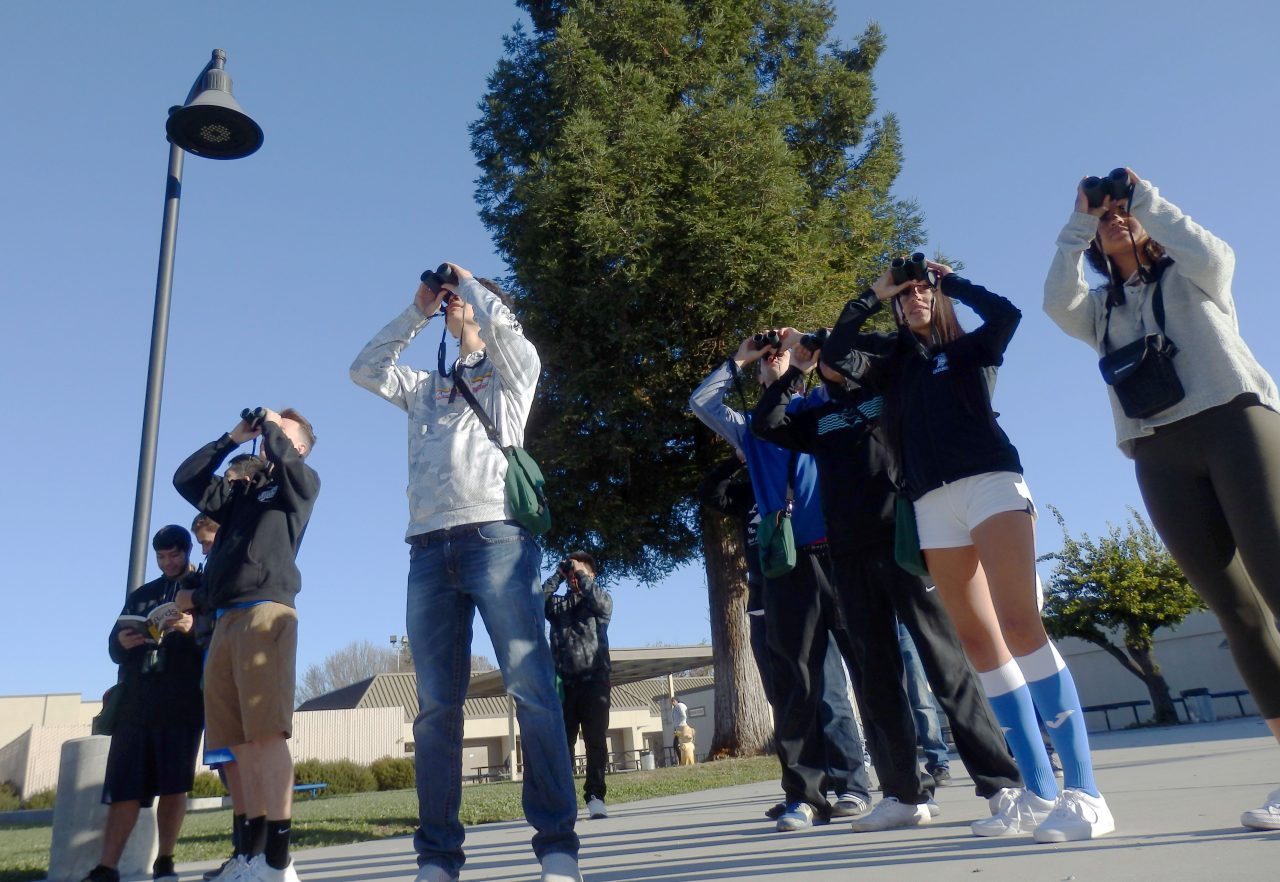
Note: This article first appeared in Birding, the magazine of the American Birding Association. It’s reprinted here with permission.
It is the oft-stated goal of the American Birding Association to bring more birders into the ranks. The purpose is ultimately to find more people to advocate for conservation, which saves more birds, which in turn leaves us with more birds to watch. This is a goal I support as well.
Birders of a certain age may remember the Uncle Sam “I Want You for U.S. Army” posters. That campaign effectively brought shy recruits out of the shadows and into the induction centers. Instead of going directly to the average man or woman on the street with posters to enlist birders, I believe there is another way: education.
I believe ornithology should be taught in U.S. high schools because I believe high school ornithology can save the world. (I do not mean to exclude ABA educators and students from Canada; I am simply limiting my comments to my own country, the one I know best.) I have been teaching the subject in my own high school for the past five years. I created the class myself, and I believe there are thousands of other biology and life science teachers out there, birders like me, who could do the same in their schools.
As far as I know, I teach the only year-long high school ornithology class in California and possibly the U.S. (I would love to hear from you if you teach it, too). I want to change that. I want to see more schools expand their repertoire to include ornithology.
I think ornithology can save the world because I interact with young people who are on the cusp of figuring out who they are and what they want to do. They can become conservation-minded citizens. I am convinced that high school ornithology is an excellent way to achieve that goal.
Get Started
The problem is that almost no one teaches it. Most schools focus on biology, chemistry, and physics for their science offerings. But if there is room in the curriculum for electives, then why not ornithology?
Ornithology is an elective class at our school. Students have to first pass biology, but most come in knowing next to nothing about birds except that they can fly, that they have feathers, and that they lay eggs. The majority are not taking advanced physics or chemistry. They have a casual interest in science and need something to fill out their graduation requirements, so they take the unpronounceable elective with the teacher they heard wasn’t too hard. In the end, the class reignites their curiosity for nature and may even put them on a path for a science major in college.
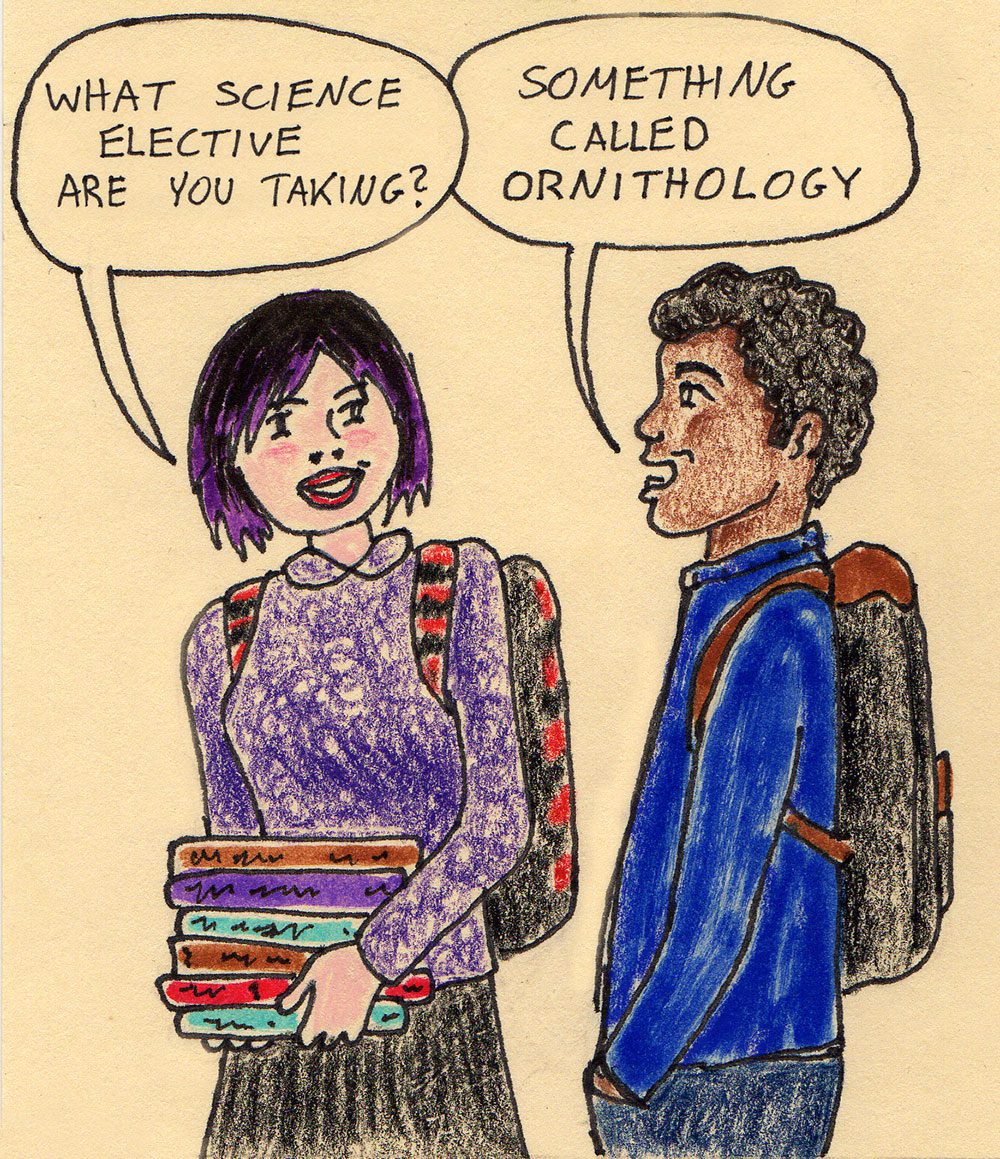
Catching the Birding Bug
I am continually amazed by the diversity of students who catch the birding bug. Athletes, cheerleaders, stoners, wannabe gang members, special education kids, African-Americans, indigenous Americans, Euro-Americans, Asian-Americans, rich kids, poor kids, quiet kids and loud kids, fashionistas, drama queens, hunters, vegetarians, LGBTQs. I have seen birds take over the lives of every kind of student.
Most of what they know of science when they enter my class is cold, hard laboratory facts about atoms, macromolecules, DNA, and genetics. I turn this around and get them outside looking at birds. On Tuesdays, we are out the door by 8:05 a.m. with binoculars, field notebooks, smartphones, and field guides—and we’re looking for birds. The rest of the week we are learning about the mechanics of flight, how dinosaurs developed feathers, metabolism, digestion, nest building, egg production, and more.
Students learn critical thinking. And grit. Much of what they discover in the classroom they can see in the birds all around them. When they leave my class, most will be birders for life. They have picked up a hobby—in some, a full-on passion—that makes them look up from their phones, pull over to the side of the road, and stop in mid-sentence at lunch when they notice a silhouette overhead, hear a song, or see a flash of color in the bushes.
I did some long-range planning with the fine people who run the BirdSleuth K–12 program at the Cornell Lab of Ornithology a few months ago, and an idea that kept recurring is that birding is a natural gateway to conservation. If you love birds, you pay attention to what is going on with the environment, and you are more likely to become involved.
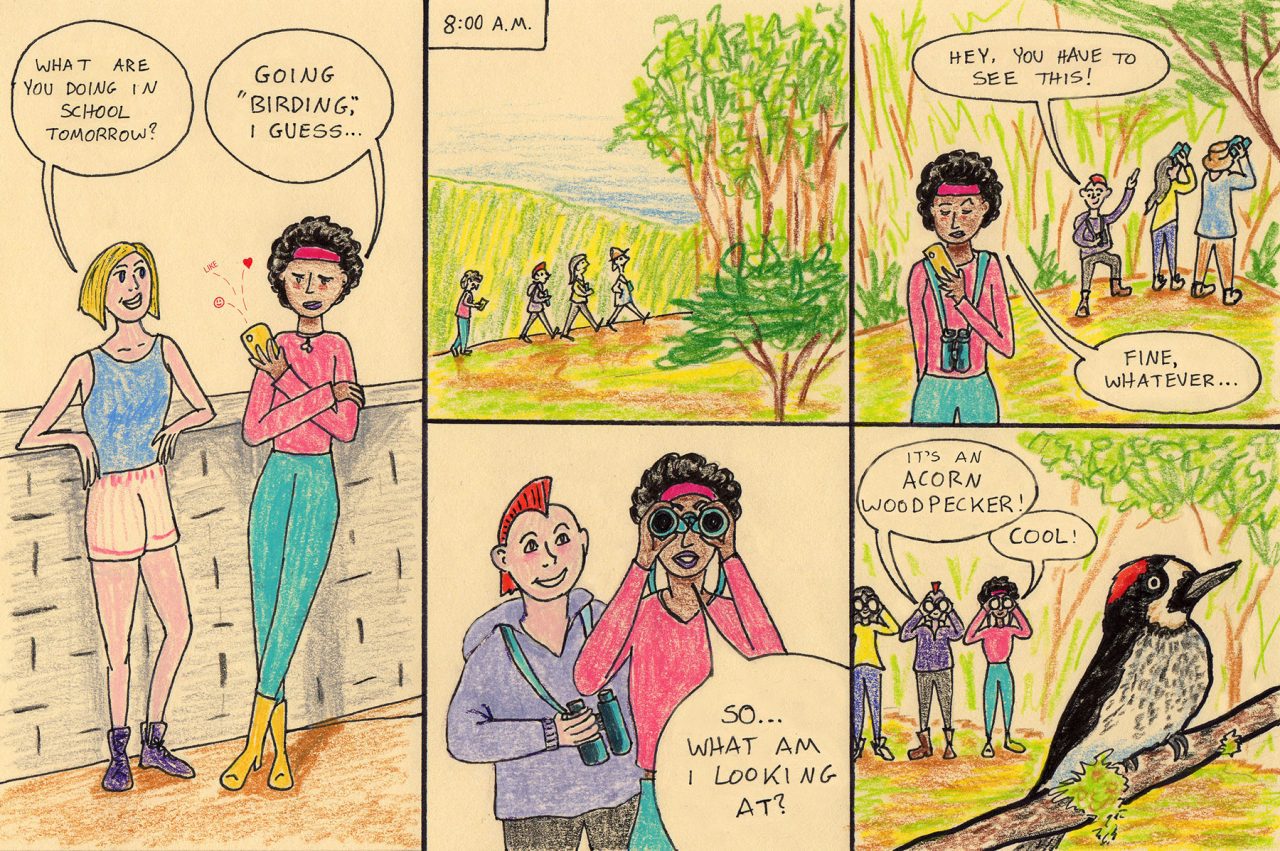
Birding Can—and Should—Appeal to the Young
When I go to birding festivals, bird walks, and bird talks, I see mostly gray heads—mine included. That worries me. We are not engaging kids in outdoor pursuits like we used to. Our recruitment rate, to use the biological term, is below the threshold needed to sustain the population of engaged and conservation-minded citizens. So what do we do? My suggestion is to go to where young people are: high school. College may be too late. It is well known that many people form their opinions of the world at a young age; if Americans dismiss or are unaware of the natural world by the end of their teens, they may never change. If we get them interested in birding in their teenage years, they will probably continue with it. I have a number of students from my first year of teaching ornithology, five years ago, who still let me know about the cool birds they saw or ask for help with identification.
High-school ornithology teachers are as rare as a Spix’s Macaw. I wish we were more like European Starlings.
Resources from Bird Academy
I recently found out about another high school teacher clear across the country in Massachusetts who teaches an 18-week ornithology course. He and I are as rare as a Spix’s Macaw. I wish we were more like European Starlings. I think more teachers who are birders would pick up teaching this class if they knew it was already being taught by someone. I threw caution to the wind and created the class, but I would hate for it to go extinct when I retire later this year.
Can you imagine if every high school across the country taught ornithology? Think about it for a minute. High school graduates would not only know birds, but would also be more aware of the native plants, insects, fish, mammals, reptiles, and amphibians that inhabit the woodlots, grassy fields, sea cliffs, and other habitats around their homes. They would know the local streams, lakes, and marshes. They would care about land-use decisions involving urban sprawl, agriculture, transportation, waste disposal, pollution, deforestation, desertification, invasive species, climate change, and even population control.
How do we get there? My class is a start, but we need more teachers to join in. We need an appropriate curriculum and textbooks. We need districts and parents asking for ornithology in their schools. You can help make this happen by calling your local school or district office; tell them about the school in California that is teaching ornithology and ask why your school doesn’t have it. Biology teachers could be especially valuable in this effort. All I did was ask, and the ball started rolling. Now my principal brags about this class.
A big component of my class is taking students birding one day every week. The rest is biology: evolution, flight, feathers, taxonomy, ecology, cardiovascular, digestive, musculoskeletal, and reproductive systems. Throw in some conservation, and you have a class.
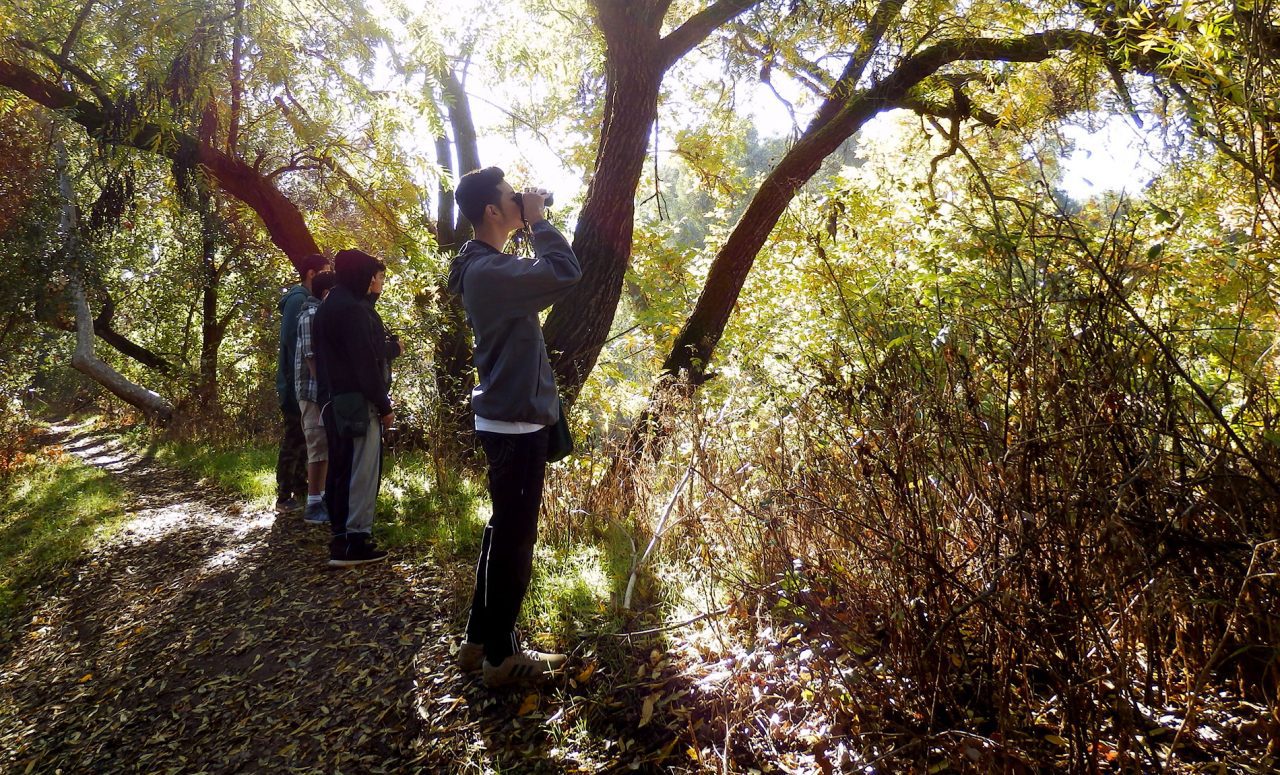
Turning Young Students Into Environmentalists
During my whole career as a teacher, I have had the partly hidden agenda of turning my students into environmentalists. Because I teach science, it has been easy to mention deforestation, overfishing, and pollution in the context of a regular life science or biology class. But as instructional standards and frameworks became more standardized and centralized, biology became more about medicine, microbiology, and genetic engineering. I fought to retain the last shreds of botany, ecology, and life forms and conservation, but bigger forces were at work. As our state standards for high school biology have changed, we have lost the common connection to nature that would benefit all high school graduates.
As high school instruction shifted into the laboratory, science students lost the thread that connected biology to the world outside their door.
Birders alert scientists to population fluctuations that may signal disruptive changes in the environment. Students in my class learn how their observations are part of a worldwide upsurge in “citizen science” that has become the eyes and ears of environmental scientists all over the globe.
This ornithology class is real science that follows the newest educational standards. It fills a gap in K–12 science for students who are interested in more than microbiology or medicine.
While this class focuses on birds, students also pick up some botany, geology, hydrology, forestry, fisheries, meteorology, and wildlife management. They learn the names, habits, and importance of local animals and plants. There are thousands of careers that study, manage, and utilize organisms from the natural world, and this class provides an overview of such careers.
Over the years, as high school instruction shifted away from natural science and into the laboratory, science students lost the thread that connected biology to the world outside their door. I found myself increasingly uninspired to teach. Luckily, along came a fellow teacher who proposed teaching a marine science class and wanted my help to get it off the ground. It was an instant hit with students, and we co-taught it for many years.
Seven years ago, this colleague transferred to another school and left me as the sole teacher of this course at our school. When you teach one thing five periods a day, year after year, even if it is a great and engaging subject, it can get stale. Honestly, I needed a new challenge. That is when I decided to try to create my dream class: ornithology!
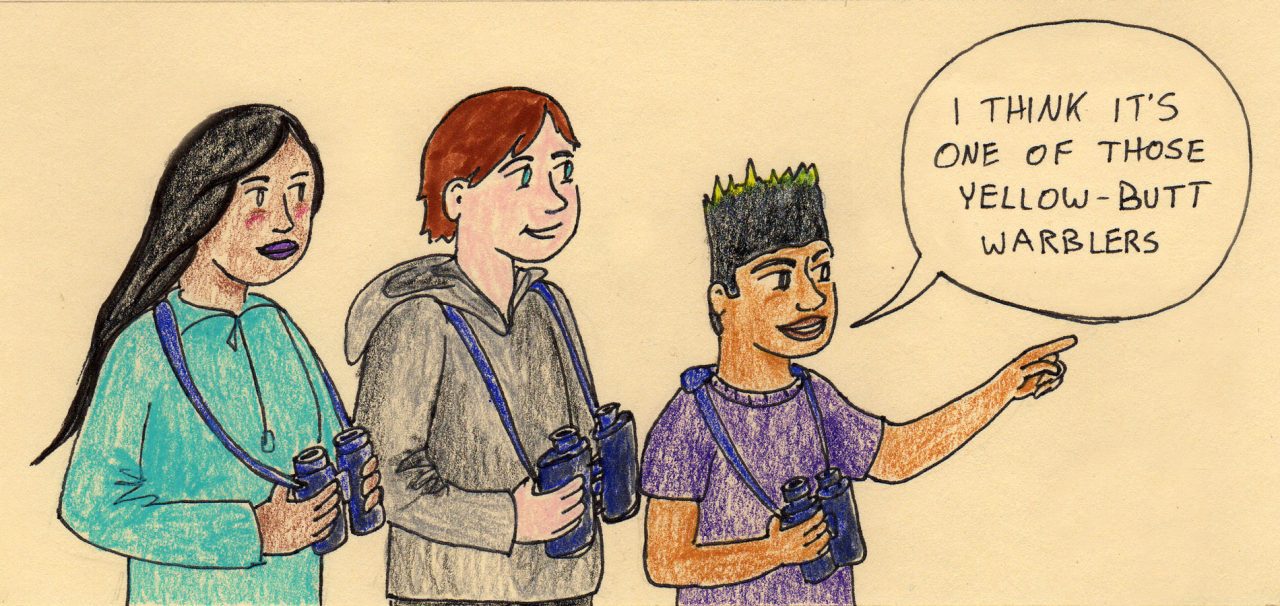
My Dream Class: Ornithology
I have been a birder for more than 50 years, and, early on in my teaching career I thought ornithology would be a great high school class. The only problem was that, for the first 15 years, I could not get a high school job. I taught a combination of middle school and junior high school. I did the Cornell Lab of Ornithology’s FeederWatch program with my students. I wrote a grant proposal and got binoculars and field guides for birding with my students in inner-city Oakland. But there still was no ornithology class.
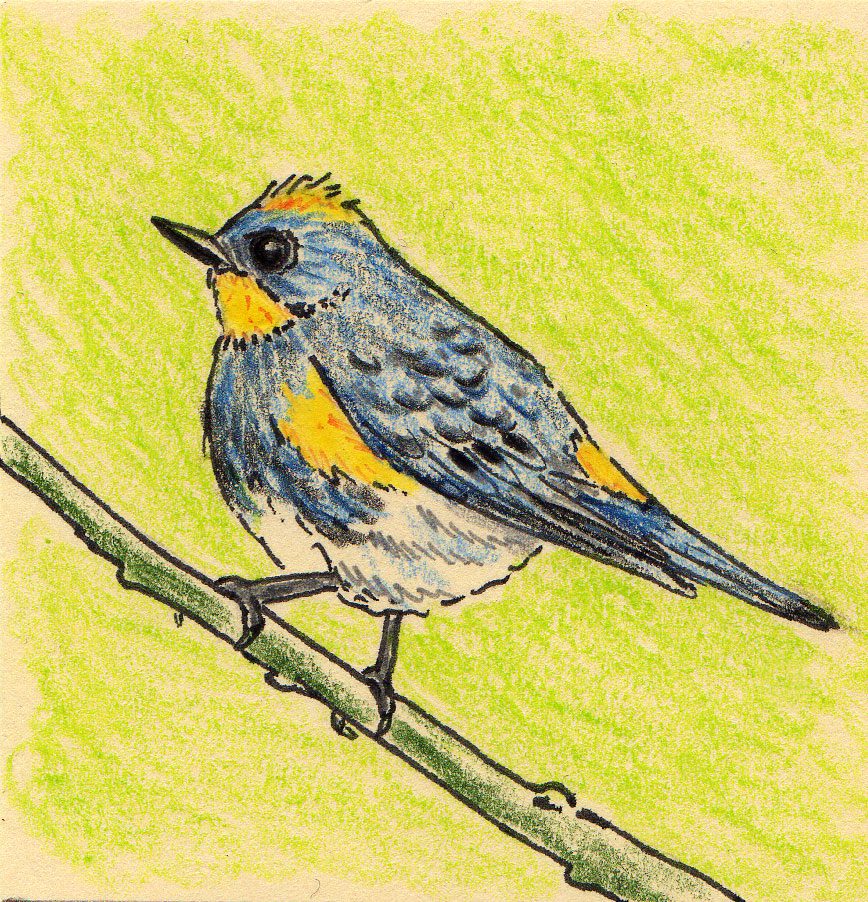
After helping to create marine science, I was ready to tackle ornithology. The first step was convincing my principal. It was surprisingly easy. We already had many popular science electives at our school. With his permission, I began the research to see if anyone else had taught the subject. I found one private school in San Francisco that had a semester class which had previously received state permission, known in California as “UC approval,” referring to the University of California’s recognition of a class as sufficiently rigorous to qualify as “college prep.” When I contacted the school, I found out the teacher had retired and the class was no longer offered. Undeterred, I tracked down the teacher and got his syllabus and some lessons.
My district required science classes to be year-long. After working out the extended curriculum, I sought approval from the University of California, and was “UC-approved” on the first try!
Next was the school board. Lucky for me, the superintendent and one of the board members were birders. Another board member was sympathetic. I only had to convince one more to tip the balance on the seven-member panel. With the unflagging support of my principal against the opposition (one board member called it “just a subset of a subset of biology”), the class was approved.
Getting binoculars was a hurdle, but I got over it. Textbooks do not exist for high school ornithology, so I cobbled together lessons and references from multiple sources, especially from the Cornell Lab of Ornithology—a great partner in helping me get this fledgling off the ground.
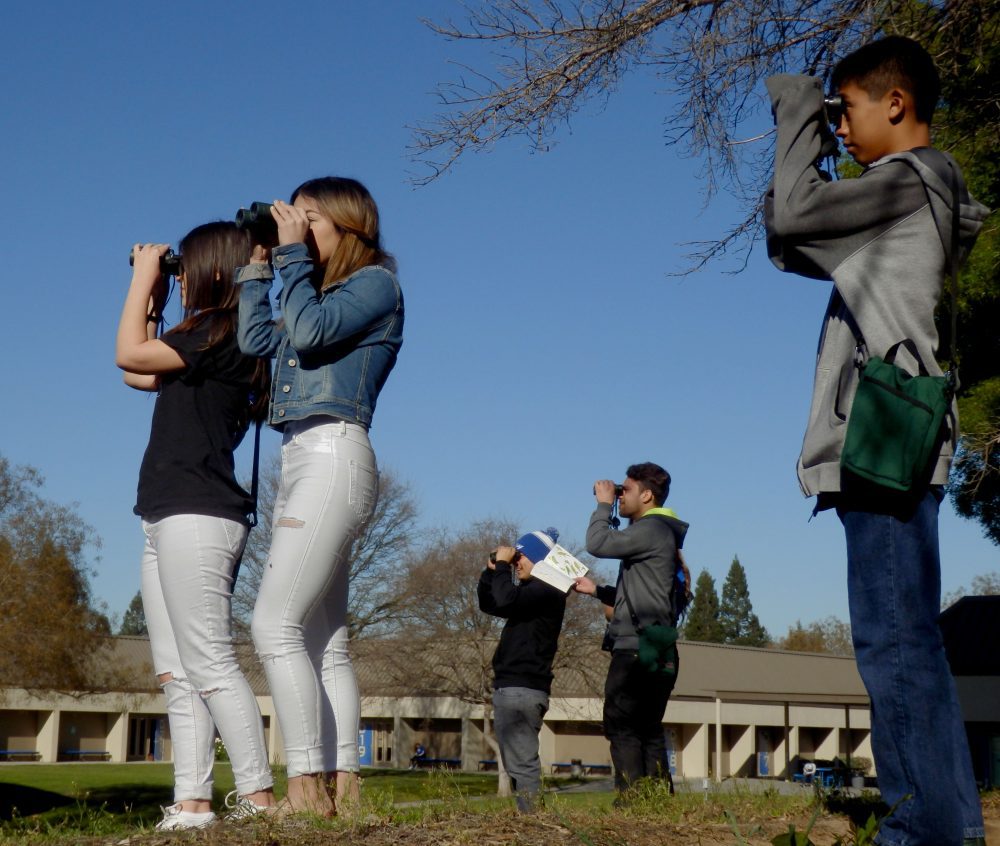
We Can Do This
Birding biology teachers out there: I Want You! We can do this. Teaching this class is a blast. The students are curious. They connect to the real world. They are engaged in lifelong learning. This class has critical thinking, grit, citizen science, Next Generation Science Standards, and Common Core State Standards all rolled into one package.
Birders who are parents: I Want You! Lobby your local school and school board to get this class in your high school. Let administrators and officials know that birding is one of the fastest-growing hobbies in the country—and that the chances of success are high.
We can’t save the world without awareness of the world’s problems. High school ornithology can reach a huge audience and create a connection to the natural world perhaps unlike any other class.
Can we work together to spread the word?
Jeff Manker is an ornithology and marine science teacher at a public high school in Gilroy, California. He currently holds board positions with the Bird School Project and the Cornell Lab of Ornithology’s BirdSleuth K-12 program. He has birded on every continent save one. Plans for Australia are in progress. This article first appeared in Birding, the magazine of the American Birding Association. Reprinted with permission. The ABA offers a PDF of this article in its original magazine layout.

All About Birds
is a free resource
Available for everyone,
funded by donors like you
American Kestrel by Blair Dudeck / Macaulay Library

